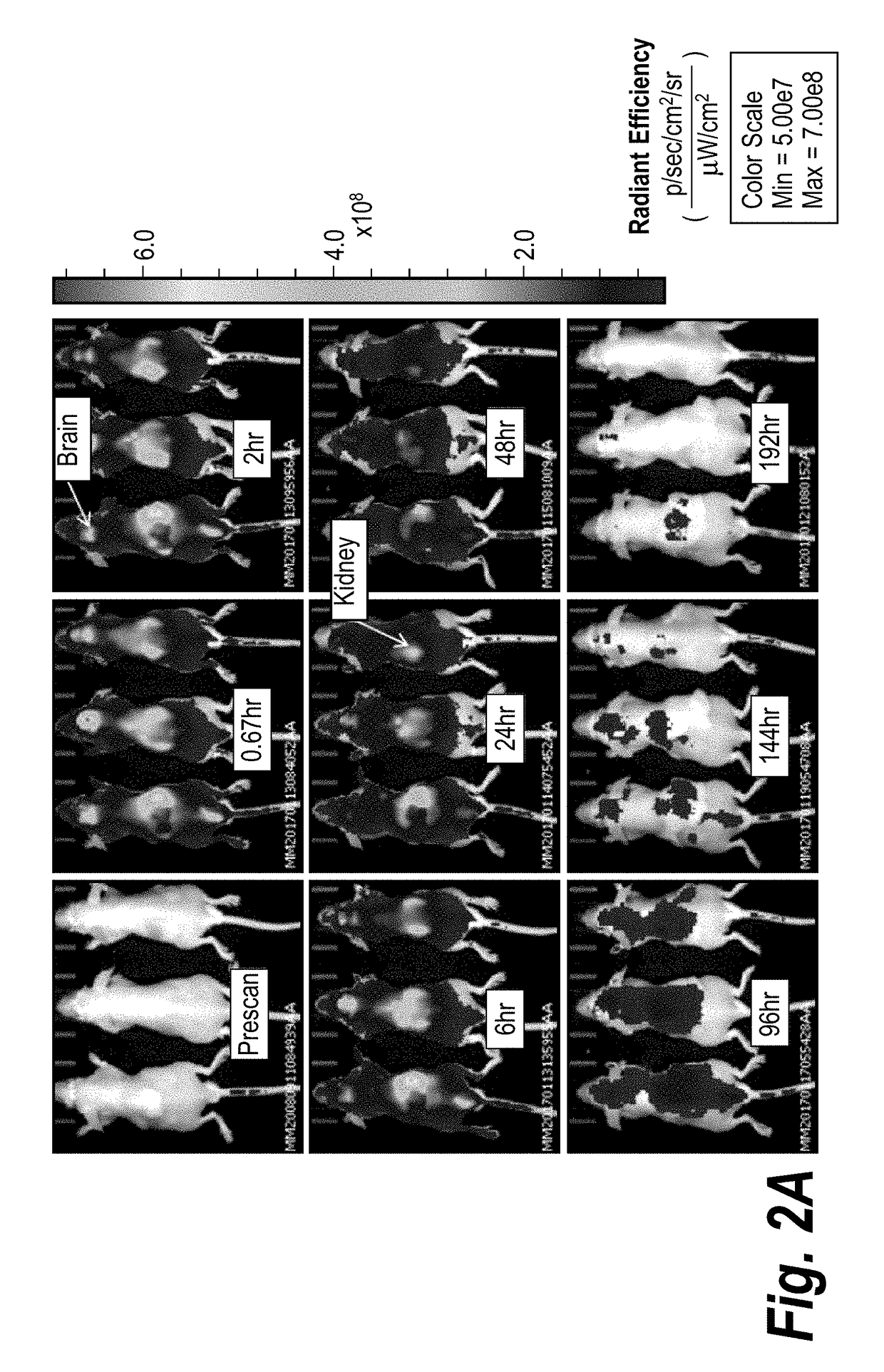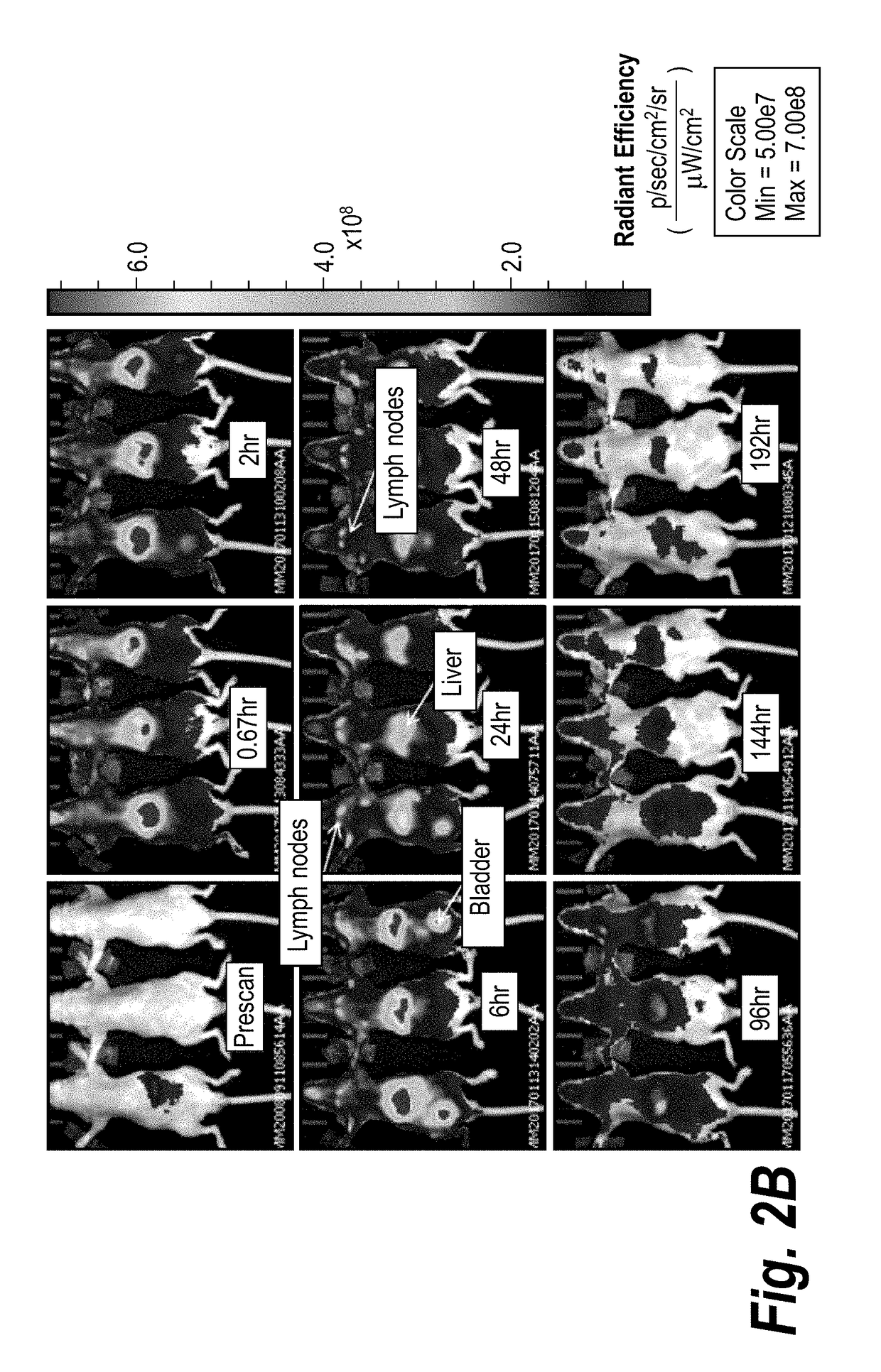Fc RECEPTOR-MEDIATED DRUG DELIVERY
a technology of receptors and drugs, applied in the direction of drug compositions, immunological disorders, antibody medical ingredients, etc., can solve the problem of reducing the therapeutic index of any drug
- Summary
- Abstract
- Description
- Claims
- Application Information
AI Technical Summary
Benefits of technology
Problems solved by technology
Method used
Image
Examples
example 1
ity of CMP-001 Slow IV Infusion in Primed Healthy Mice
[0335]In a preliminary study using mice having anti-Qb antibodies from previous CMP-001 exposure, it was found that such mice did not tolerate IV bolus administration of 100 μg CMP-001 (i.e., 100 μg G10 CpG oligodeoxynucleotide (SEQ ID NO: 32) formulated with 400 μg Qb (VLP)). These mice had been primed in advance (D-19) with 12.5 μg CMP-001 administered subcutaneously.
[0336]A single-administration tolerability study was then undertaken to investigate whether slow IV infusion administration of 100 μg CMP-001 (i.e., 100 μg G10 CpG oligodeoxynucleotide (SEQ ID NO: 32) formulated with 400 μg Qb (VLP)) could eliminate toxicity observed with IV bolus in mice with anti-Qb antibodies from previous CMP-001 exposure.
TABLE 1Study design for tolerability study.TreatmentGroupNPrime1TreatmentDoseRouteschedule18YesCMP-001100 μg in1 hr slow IV×1100 μLinfusion28YesCMP-001100 μg in30 min slow×1100 μLIV infusion38YesCMP-001100 μg in15 min slow×110...
example 2
ity of CMP-001 IV Bolus in Naive Healthy Mice
[0338]A single-administration study in naïve mice was undertaken to investigate the maximum tolerated IV dose of CMP-001 in the absence of anti-Qb antibodies. Chemokine / cytokine response (20-plex Luminex-LMC0006M) at 3 hrs post IV CMP-001 was evaluated.
[0339]Naïve mice were administered 0, 100, 300, 600, or 1200 μg CMP-001 (dose amounts in terms of drug substance, G10 CpG oligodeoxynucleotide (SEQ ID NO: 32)) by IV bolus administration.
[0340]Mice receiving 0-300 μg CMP-001 showed no clinical signs. Mice receiving 600 CMP-001 were hunched, lethargic, and exhibited piloerection 24 hours post administration. Two of three mice receiving 1200 μg CMP-001 died within one minute, and the third mouse, which due to recoil received 1200 μg CMP-001 in two partial doses administered over 3 min, showed similar clinical signs as the mice receiving 600 μg CMP-001. Clinical signs in mice receiving 600-1200 μg CMP-001 were resolved by 48 hours post-adminis...
example 3
Route of CMP-001 Administration on Biodistribution in CT26 Tumor-Bearing Mice
[0343]Single doses of fluorescently labeled CMP-001 were administered either intratumorally (IT), subcutaneously (SC), or intravenously (IV). The IT and SC doses were given in both primed and unprimed mice to evaluate the impact of immune complex formation on distribution. The IV dose was given only in the unprimed setting because of toxicity previously observed with IV bolus administration in primed mice. At specified timepoints, biodistribution was imaged using an IVIS kinetics in vivo imaging system (semi-quantitative 2D analysis). Representative results are shown in FIGS. 2A-2C.
TABLE 5Study design for biodistribution study.GrpNPrime1TreatmentRouteDoseImaging Timepoints13YesCMP-001-IT100 μg in 20 μLPre-scan, 40 min, 2 h, 6 h,Cy5.524 h, 48 h, 96 h, 144 h, 196 h23NoCMP-001-IT100 μg in 20 μLPre-scan, 40 min, 2 h, 6 h,Cy5.524 h, 48 h, 96 h, 144 h, 196 h33YesCMP-001-SC100 μg in 100 μLPre-scan, 40 min, 2 h, 6 ...
PUM
| Property | Measurement | Unit |
|---|---|---|
| diameter | aaaaa | aaaaa |
| diameter | aaaaa | aaaaa |
| diameter | aaaaa | aaaaa |
Abstract
Description
Claims
Application Information
 Login to View More
Login to View More - R&D
- Intellectual Property
- Life Sciences
- Materials
- Tech Scout
- Unparalleled Data Quality
- Higher Quality Content
- 60% Fewer Hallucinations
Browse by: Latest US Patents, China's latest patents, Technical Efficacy Thesaurus, Application Domain, Technology Topic, Popular Technical Reports.
© 2025 PatSnap. All rights reserved.Legal|Privacy policy|Modern Slavery Act Transparency Statement|Sitemap|About US| Contact US: help@patsnap.com



